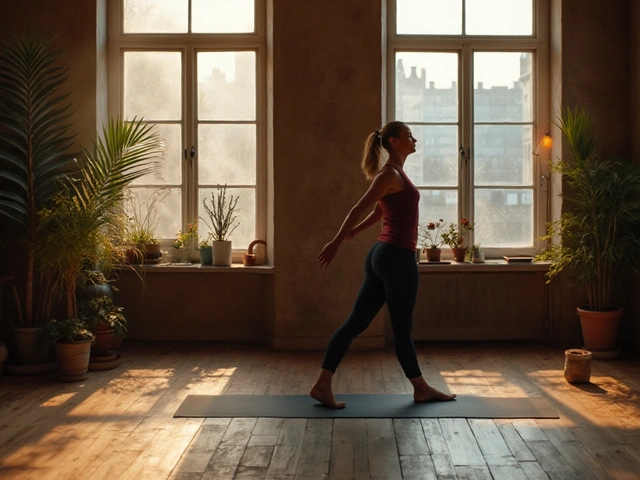Flexibility Training: Simple Moves to Feel and Move Better
Feeling tight all the time? Tightness often comes from how you move, not just from being “inflexible.” With a few focused habits, you can expand range of motion, reduce pain, and make everyday tasks easier. This page collects practical tips and short routines to help you get started—no fancy gear needed.
Quick 10‑Minute Flexibility Routine
Do this daily or on most days. It warms up joints, opens muscles, and teaches control.
- 2 minutes: gentle walk or marching in place to raise body temperature and loosen hips.
- 2 minutes: hip circles and shoulder rolls, slow and controlled.
- 3 minutes: dynamic leg swings (front-to-back and side-to-side) and arm swings, moving through comfortable range.
- 3 minutes: active holds—lunge forward and lift arms overhead for 20–30 seconds, then a seated forward reach while keeping a long spine for 20–30 seconds.
These moves focus on active range of motion. Active work helps your nervous system learn the new range, so gains stick.
How to Progress Without Hurting Yourself
Increase volume before intensity. Add repetitions and time first, then add deeper range. If a joint feels sharp or unusually painful, stop and reassess. Mild tension is normal; burning pain or pinching is not.
Mix active stretching (moving into range) with short passive holds (20–40 seconds) after warm-up. For example, follow leg swings with a 30-second hamstring hold. Active work builds control; passive holds help tissues relax.
Use breathing as a tool. Slow exhale during a stretch helps muscles let go. Try 4–6 slow breaths while holding a position instead of holding your breath.
Check progress with simple tests: can you squat with heels down? Can you raise both arms overhead without arching your lower back? Can you touch your toes with a relaxed spine? These quick checks show real improvements better than how a stretch feels.
Massage and hands-on therapies speed the process. Trigger point work, Amma, or warm stone massage can ease tight spots so movement drills work better. If you’ve tried self-care for months with little change, treatments like Feldenkrais, Hellerwork, Rolfing, or Ortho-Bionomy can re-train posture and movement patterns.
See a professional sooner if you have severe pain, swelling, sudden loss of motion, or conditions like advanced scoliosis. For chronic but manageable tightness, pair consistent daily mobility work with one manual therapy session a week for a month and notice how movement changes.
Small, daily wins add up. Ten minutes most days beats one long session once a month. Focus on control, breath, and simple progressions. Move a little more intelligently and your body will reward you with more ease and less pain.

Enhancing Your Pilates Practice with Effective Fascia Stretching Techniques
Hey there! If you're like me, always hunting for new ways to power up our Pilates sessions, you'll dig this. We're diving into how stretching our fascia – yeah, that's the connective tissue jazz – can seriously crank up our Pilates game. Think about it; supple fascia equals smoother moves and more oomph in our workouts. I'm gonna break it down for you, sharing personal experiences and some ace moves to get that fascia flexing. Whether you’re a newbie or a seasoned pro, join me as we explore this little trick to making our routines more dynamic and propel our Pilates to the next level!
Categories
- Health and Wellness (148)
- Alternative Therapies (86)
- Massage Therapy (40)
- Travel and Culture (15)
- Beauty and Skincare (9)
- Holistic Health (8)
- Health and Fitness (5)
- Spirituality (5)
- Other (2)
- Personal Development (2)



